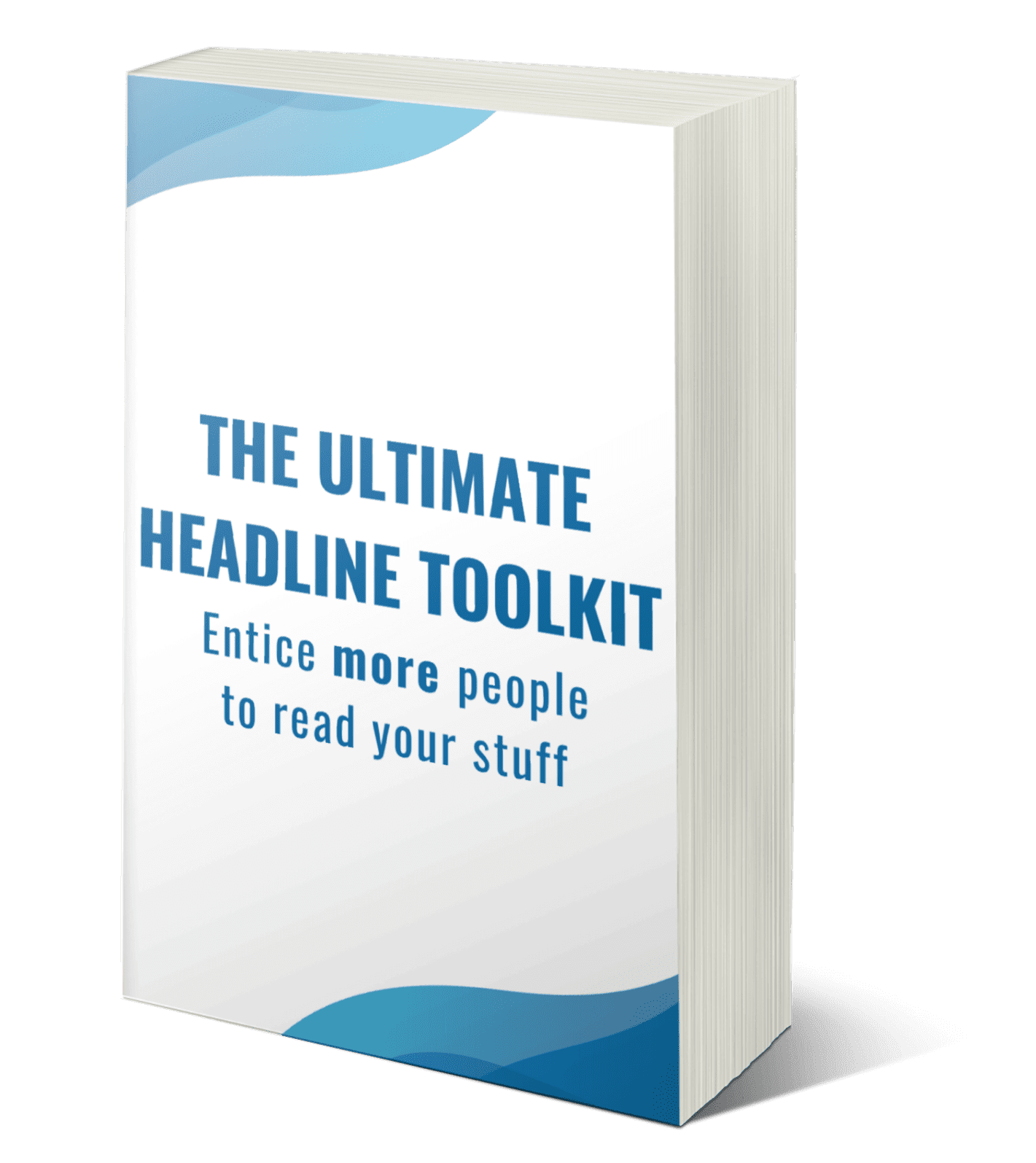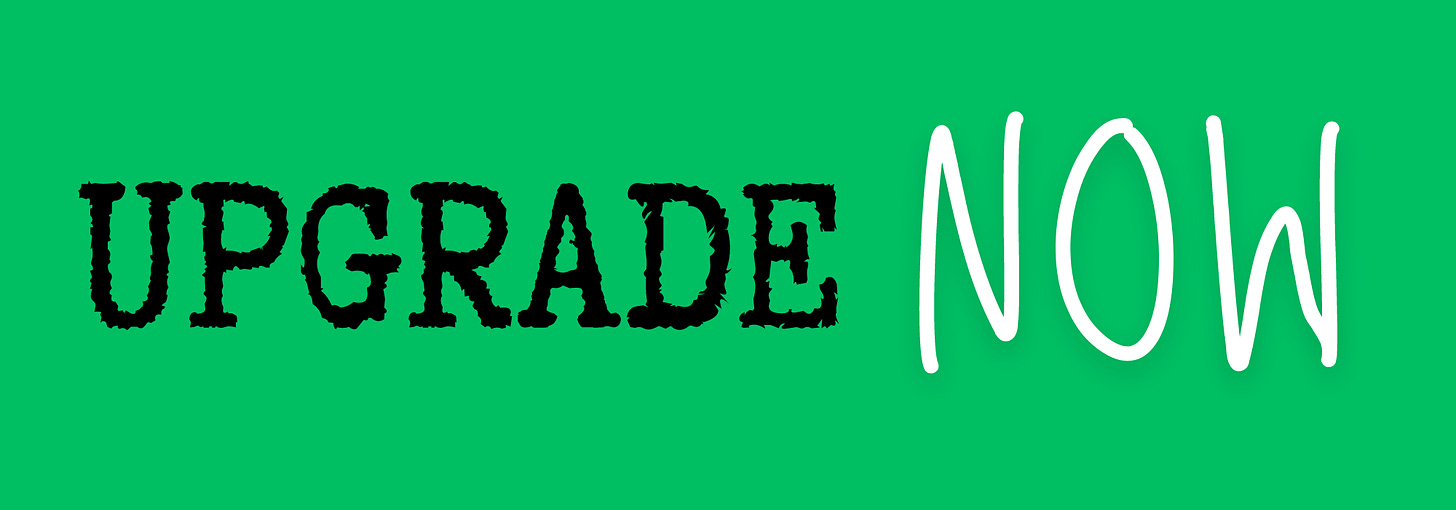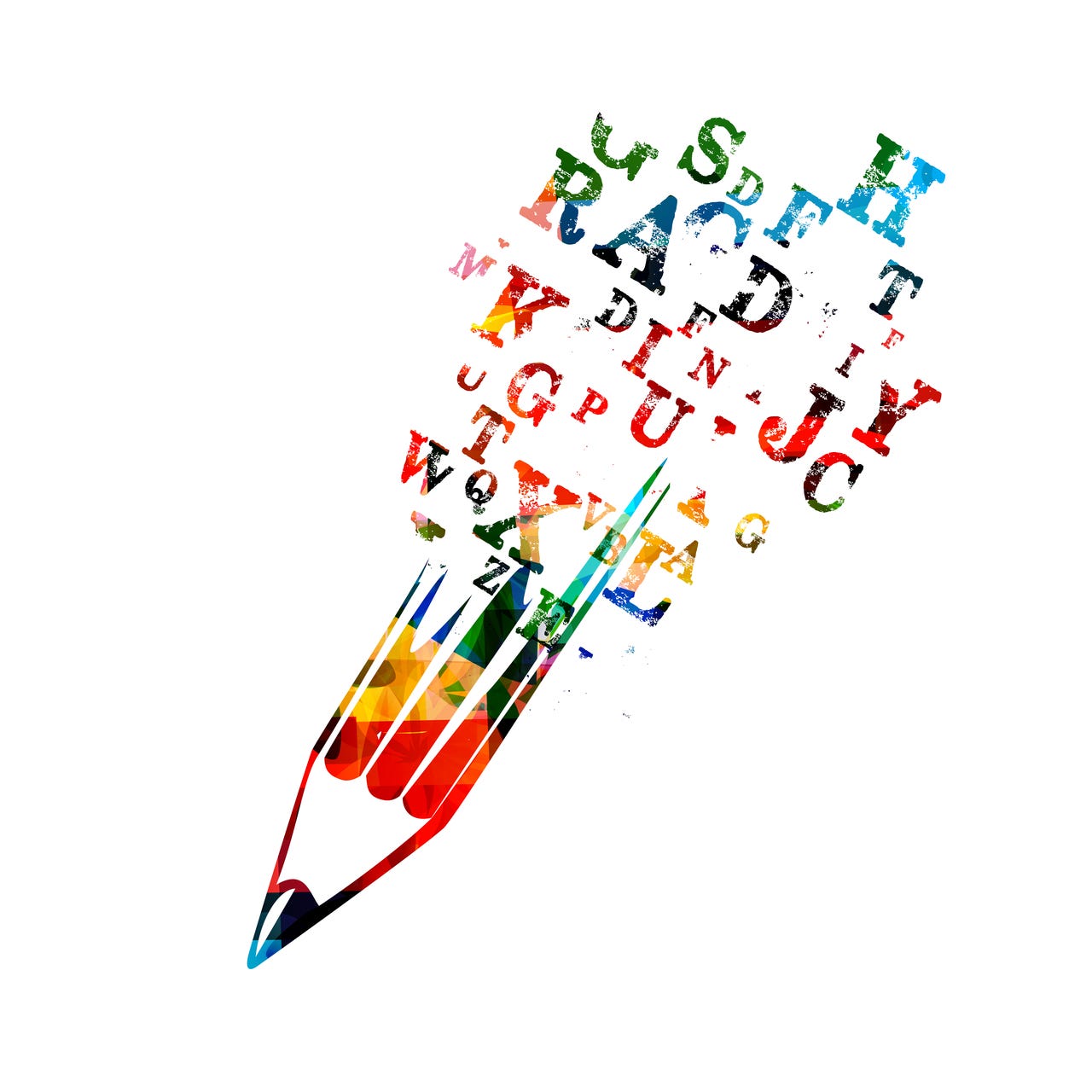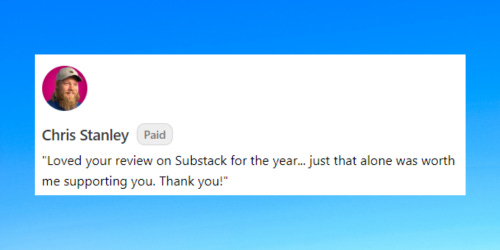Your first sale probably won't (and shouldn't) be your membership
"The more ways somebody has to support you, the more likely they will do so eventually."
Writers should get paid for doing what they love, which is something few people are truly capable of: entertaining, educating and inspiring others through the written word. Become a paid subscriber to How to Write for a Living for just £8 a month to unlock every benefit in our comprehensive membership package.
By
Hi,
Every writer wants to make gobs of money on their membership. They all want 100 or 1,000+ eager readers paying them monthly to read their beautiful words the day they launch their membership.
I’ve never met a writer who didn’t want to wake up on the first of the month with a guaranteed $5k in their bank account. It’s a lovely, wonderful dream.
Unfortunately, the reality is that subscriptions are the hardest game in town, and getting harder with every passing month. People are extremely wary about committing to something long term even if it’s cheaper than just buying it outright.
Companies aren’t making it any easier by changing the rules to the game, deleting things from behind their paywall, and leaving people devastated that they don’t have access to what they signed up for at the outset.
The unfortunate truth is that whether you’re a new writer or just new to a reader, you’re going to have a lot of trouble convincing somebody to give you money every month until they know, like, trust, and love your work.
AD | The Ultimate Headline Toolkit
“Most writers struggle to get noticed. They feel despondent with the lack of readers. I want to change that for you.
I earn $1200/month on Medium and have grown to 12,500+ followers. My success has come from high-quality headlines. Learning how to craft irresistible headlines is the fastest and easiest way to grow your audience.
I want to put all the tools in your hands so you know exactly what to do to get more people to click on your stuff. This toolkit contains everything that has worked for me. No special copywriting training is needed.”
Want to advertise on How to Write for a Living? Just email hello@davidmcilroy.com.
Even then, it’s very very hard. I sell thousands of books and other products every year, but only 900 people are paying for my Substack membership out of 45,000+ subscribers.
That’s a ton and I’m super grateful, but that money accounts for less than 5% of my overall revenue.
Yes, it’s great that money exists and I’m very, very happy to have a base of support every year, but even after 2+ years spent building a membership, and writing the definitive book on the subject with Claire Venus called How to Build a World Class Substack, it is still incredibly hard to convince somebody to join my membership.
Meanwhile, 768 people backed the Kickstarter for our Substack book, and I’ve made over $100,000+ selling books this year, compared to just $17,000 in gross annualized revenue on Substack.
What I’m trying to say is that memberships are a tough first sale to a prospective reader, especially when they don’t know your work.
What is a first sale? I know a lot of business terms are unintelligible jargon, but luckily this one means exactly how it sounds. A first sale is the first thing your customer buys from you.
Most writers have never thought about the customer journey from finding your work through falling in love with it, to buying and evangelizing for it. If you haven’t thought about your customer journey, then get a sheet of paper, or a Miro board, and spend some time charting out how people find your publication, what you want them to do after they subscribe, and how they navigate your publication.
Is it easy to fall in love with your work?
Can they find your best work without confusion?
Are they able to tell other people what to do without you chiming in?
If not, then it’s time to do some work to make it easier for them, but let’s focus on just that first sale for now, since it’s probably the most important single step in this journey besides getting them into your ecosystem in the first place.
The most obvious flaw in most publications is that readers don’t know what to do or how to buy from them.
This first sale needs to have a lot of intention behind it because parting a customer with their hard earned money is a really hard and intimate task. While it’s something we all do freely it’s not something anyone does lightly. Moving somebody from spending $0 to spending even $1 is harder than convincing somebody to go from spending $1 to spending $100.
Before somebody pays for your work, they aren’t convinced what you have to say has any value to them. Yes, your work has value for simply existing, but people only pay for things that have value to them.
So, the first thing we have to do is demonstrate the value our work has and who will get the most value from it. The clearer you are on who gets value from your work, the easier it is for somebody to decide whether they should pay for your work or not.
Consider supporting How to Write for a Living!
Upgrade to our paid tier to unlock every benefit in our comprehensive membership package. Become a Sustaining Member for a bit extra and book up to three 1-to-1 coaching calls with . Check it out. 👇
Once somebody finally agrees that your work has value to their specific situation, now it’s about showing them how to support your work.
When designing this first sale, you can certainly keep piling value behind your paywall until people finally see become paid members, but most writers don’t have abundant resources at their disposal like I did when I started The Author Stack. Additionally, people are already wary about committing to a long term subscription, even if it’s just for a couple dollars.
Since turning on paid subscriptions, we have added close to 900 member-only interviews, courses, books, and more. Still, we are only converting 2% of our readers into paid members. Substacks metric say 5-10% is normal, but in my experience 2-3% is more normal, especially if you throw other products into the mix.
It turns out that if you have 45,000+ subscribers, 2% is a lot, but it’s considerably less if you have 500 subscribers. So, how do we get more of those subscribers to buy from you?
If you don’t have the kind of back catalog where you can stack a ton of value behind your paywall, then you might think about craft a different kind of first sale, namely a one off product like a book.
People are much more likely to buy your work if they can buy and consume a complete thought at once, even if it is considerably more expensive than a paid membership.
We’re not even talking about creating something brand new. One of the best ways to get somebody to buy your work is to compile the best work from your blog into a book and either give it away (if you’re trying to get subscribers) or sell it (if you’re trying to make money).
Ideally, you would do both, by compiling a lead magnet of 5,000-10,000 words to attract new subscribers with part of your work, and additionally compiling a larger collection of 50,000-100,000 word into a book you sell.
This might seem like a ton of words, but every time I’ve asked somebody to go count how many words they’ve written, they’re usually surprised they already have enough for a book.
Yes, you can also create a course, email series, podcast, or other product to sell, but if you’re trying to attract people to read your work, then it’s often best to make your first sale something in the same format. Similarly, if you have a podcast, then compiling an audio course might be the best first sale for you.
For now, let’s focus on making a book from your work.
Even if you have a fiction or memoir publication, you can compile a collection of short stories demonstrating how your ideal reader should feel reading your work. If you can get them to feel the same way in your lead magnet as they will feel reading your work, you’ll go a long way to making people fall in love with your work.
I have an extensive guide on my publication on compiling a book into a blog that was ironically compiled into our Substack book, but it generally breaks down into four stages.
Stage 1: Gather everything into one place - This is the simple but deliberate act of transferring all your work into a new document. It’s really important that you do this by hand so you can see everything in one place and make some decisions about where to place things.
Stage 2: Bringing order to chaos - Once you have everything in one place, it’s time to bring order in the chaos. I recommend chunking everything into 3-5 different sections or themes. In this stage you’ll be ruthlessly cutting everything that doesn’t fit into a theme and curating those things that have the deepest resonance with your audience.
Stage 3: Filling in the gaps - Once you’ve ruthlessly cut down to the bone, you’ll likely find gaps you’ll have to fill to make your book into a complete thought. I recommend writing these gaps onto your blog while you also use them in your book.
Stage 4: Tightening everything up - Once you’ve got a good collection going, you should hire and editor and a proofreader, along with a cover designer, to make your work feel like a book.
I’ve done this so many times in my career and it works because people are desperate for curation. There are over 1,000 posts on my publication, and it’s overwhelming. By focusing people on one specific topic, or product, I can fight that overwhelm and give them focus. This is hugely valuable.
People want to know where to look and how to consume your work in the correct order. Writers discount how important sequencing is to a reader, but the order by which you read something matters, and this kind of curation always has value and it’s very easy for readers to see it.
I’ve been using this strategy for non-fiction since 2017, and what’s great about it is that not only is it a low barrier of entry to new readers but it’s also incredibly enticing for your existing readers who already pay you.
Nobody wants to dig back through your publication to find something that resonated with them, but they’ll gladly buy a book that has the same information presented in the right order for easy reference.
Our Substack book was 100% compiled from Claire and my Substacks, with only small editorial embellishments, and it raised $18,348 from 768 backers. Before that, Monica Leonelle and I raised $30,372 from 715 backers for our Direct Sales Mastery for Authors books, which was 50% previously published material and 50% compiled from our publiations. Back in 2023, I raised $5,282 from 278 backers for a weird collection called This is NOT a Book.
I even just did this with a short story collection called Bulletins at the End of the World that raised $3,972 from 153 backers.
We have a book live right now called $8,333: 12 Concepts to Six Figures, which has currently raised $9,417 from 453 backers that is 100% compiled from work in our previous books.
If you take the money we’ve raised through our books and added it to the money we’ve made straight from our membership, that’s an additional $58,137 monetizing the same writing work a second time, more than 3x more than what we make just from our membership alone.
This has brought hundreds of new readers into our ecosystem while allowing us to monetize our work again and again and again. It’s a lot easier to see what you’ll get from our books than from exploring the morass of The Author Stack.
On top of that, new readers now have a very clear path to fall in love with our work. If you offer them a free, smaller compilation when they initially subscribe, it’s even easier for them to find value for them. You’re now guiding them on a journey through your best work, and showing them why they should love your stuff.
You still might not have a ton of people who take you up on your paid subscription, but you’ve opened up a whole new line of business for people to support your work.
Every year, you could compile a collection of your work and launch it on Kickstarter (my preferred launch platform), your own blog, retailers, or anywhere to give people the chance to support you in more ways.
The more ways somebody has to support you, the more likely they will do so eventually.
If you enjoyed this, I hope you’ll check out The Author Stack, where we have a lot more about navigating the intersection between craft and commerce.
Russell Nohelty (www.russellnohelty.com) is a USA Today bestselling fantasy author who has written dozens of novels and graphic novels including The Godsverse Chronicles, The Obsidian Spindle Saga, and Ichabod Jones: Monster Hunter. He is the publisher of Wannabe Press, co-host of the Kickstart Your Book Sales & Six Figure Author Experiment podcasts, and cofounder of the Writer MBA conference & The Future of Publishing Mastermind. He also co-created the Author Ecosystem archetype system to help authors embrace their natural tendencies to find success. You can find most of his writing at theauthorstack.com. He lives in Los Angeles with his wife and dogs.

What others are saying about How to Write for a Living:
📣 Want to support this publication + get more eyes on your brand? Become a How to Write for a Living sponsor. Just email hello@davidmcilroy.com for more info.









![Table of Contents [Start Here]](https://substackcdn.com/image/fetch/w_140,h_140,c_fill,f_auto,q_auto:good,fl_progressive:steep,g_auto/https%3A%2F%2Fsubstack-post-media.s3.amazonaws.com%2Fpublic%2Fimages%2Ff55bc14d-bcf7-4bc8-b217-8677a657fbda_1286x858.png)


Very good insight, thanks 😊. Can I translate part of this article into Spanish with links to you and a descripción of your newsletter?
Oh wow! This confirms what I have been thinking about doing. I can't thank you enough for sharing your genius with us. Thank you!